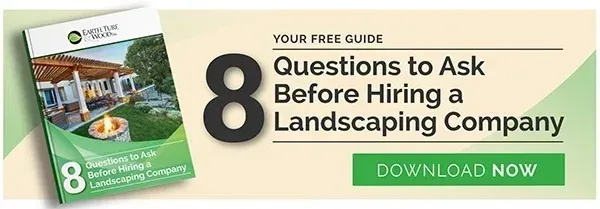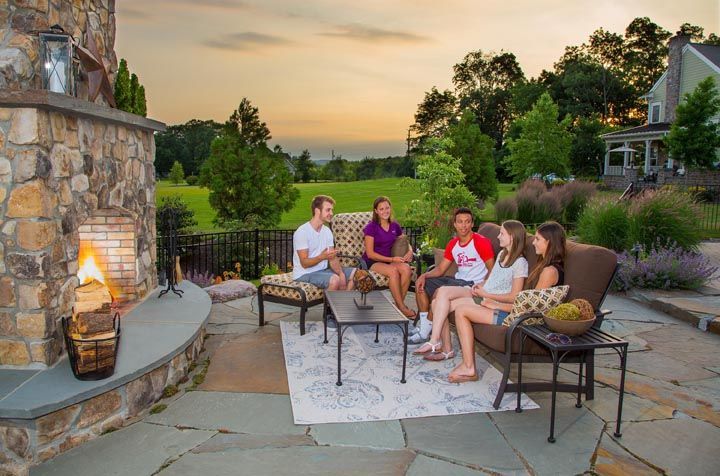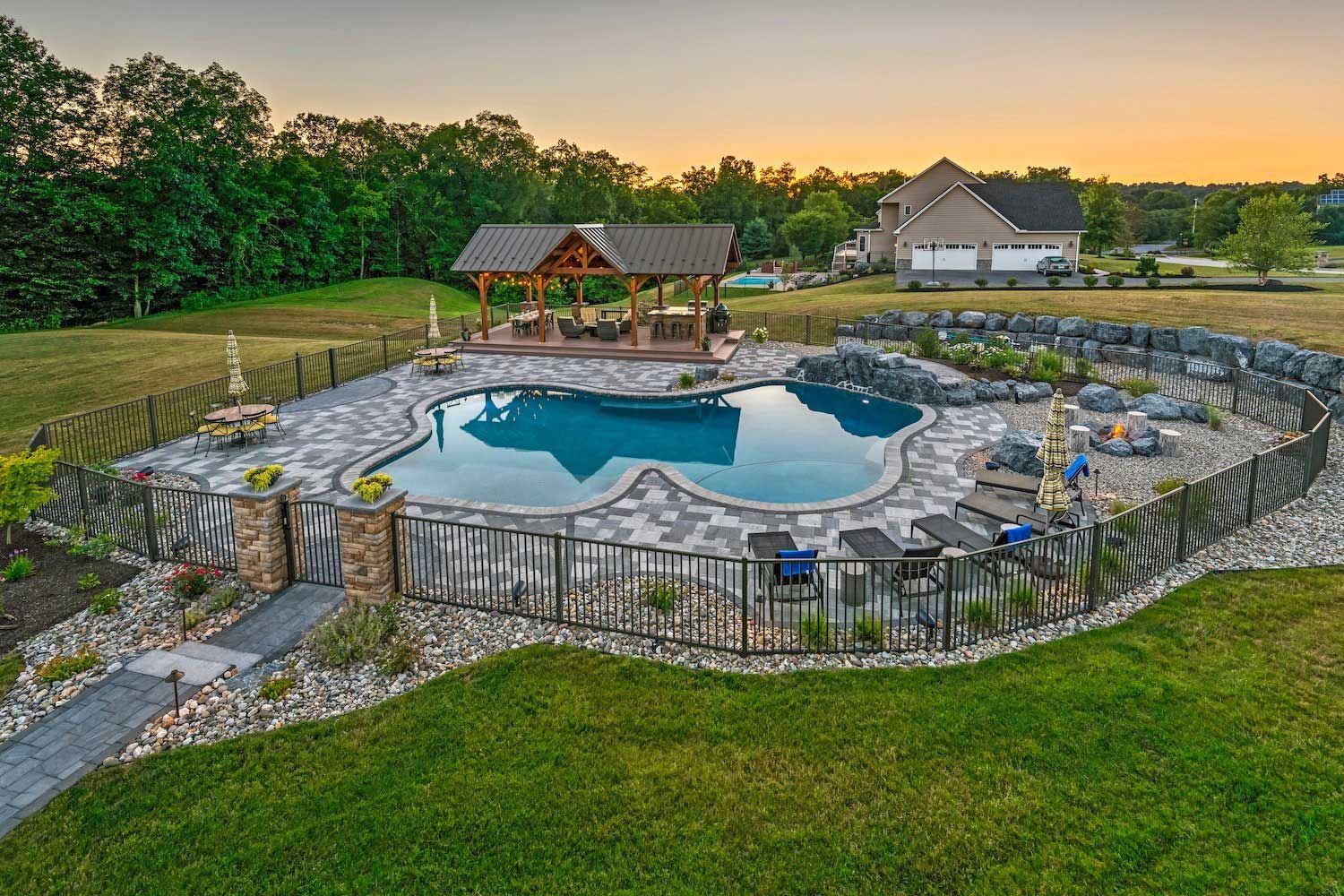Large Tree Planting: Costs, Considerations, and What's Right for Your Lancaster or Reading, PA Home
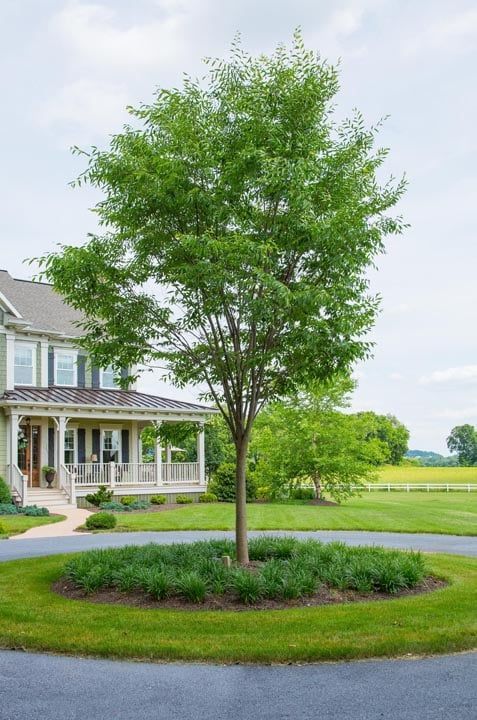
Trees provide beauty, shade, and tremendous value to an overall landscape.
But waiting for small trees to grow can take many years. That’s why we get a lot of inquiries about large tree planting services from clients who are looking for a more mature landscape right away. They want a landscape that provides benefits such as shade and beauty—but without any delay.
While it’s definitely possible to add large trees to your landscape, there are some important considerations to keep in mind before you do. We’ll explore some of the key points to bear in mind as you think about tree planting for your Lancaster or Reading, PA home.
But first, let’s look at some definitions of what “large” really means. Since it’s such a subjective term, we want to define what we would consider a large tree—for the purposes of this article.
Medium Vs. Large Trees
As we mentioned, the term large is subjective. What you think of as a “large tree” might be different than what we think. First of all, it’s important to note that “large” is really relative to the species of the tree. While most people think about size in terms of height, what makes a tree truly large to a landscape professional is the size of its root ball. That’s what makes a tree difficult (or easy) to move and install.
For the purposes of this article we will consider a medium-size deciduous tree to be around 12- to 15-feet in height with a rootball of approximately 36 inches (though again, that is relative to the species). At that approximate size, a landscape contractor would be able to move the tree with their own equipment.
When referring to large tree planting in this article, we are talking about trees that have a root ball that is significantly more than 36 inches and that is likely 20-foot or higher. This size tree requires specialized equipment, which we will discuss later on.
Finding the Best Trees for Your Home
Every yard is different and every homeowner has different wants and needs. While trees of all sizes can be valuable to a property, some homeowners specifically like medium to large-size trees for the comfort and shade that they provide. A more mature landscape is both visually appealing as well as functionally desirable.
While homeowners will sometimes think they want the biggest trees they can get, large trees aren’t always necessary to meet the objectives of your landscape design. They can also come with some downsides.
For one, planting large trees can be a fairly involved process. It’s important to ensure that your contractor has proper access to the site if you’re going to be planting large trees.
Getting large trees onto your property will involve the use of a piece of machinery called a tree spade, which is very big and mounted on the back of a very large truck.
This may be challenging to get into your yard (depending on where you want the tree to go).
It can also become an expensive endeavor as tree spade operators typically charge by the hour. You may also have to pay extra to repair damages made by the tree spade. Equipment this large has the potential to be destructive on your property. And if the ground is too wet, it may be questionable if the work can even be done until it freezes in the late fall or early winter.
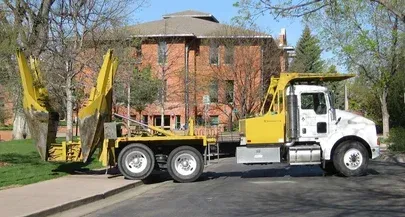
Though we’re able to coordinate the installation of large trees if that’s what you truly want, sometimes it’s actually better to opt for medium-sized trees. As we often tell our clients, bigger isn’t always better. Since large tree planting can become laborious, it’s a lot easier to coordinate the installation of a series of medium trees.
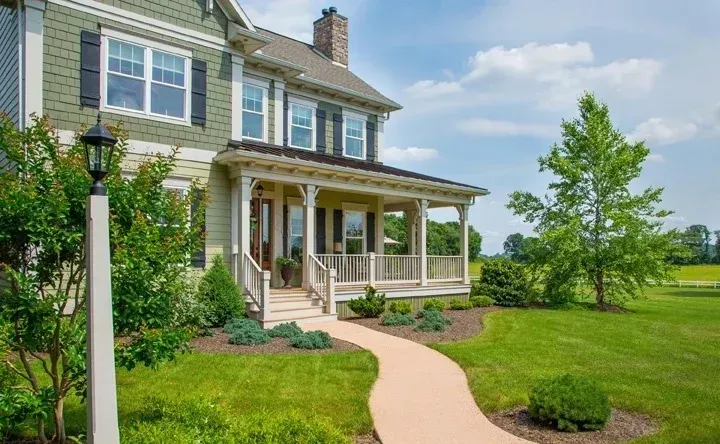
Though we’ve planted a variety of tree sizes on our clients’ properties, some of the largest that we have been able to do without the use of a tree spade have been around 15 feet tall with a 36-inch root ball. The average size deciduous tree we plant is around 8 to 12 feet tall and the average evergreen that we plant is around 6 to 9 feet tall. These medium trees often meet the needs that homeowners desire and without requiring the need for large machinery.
For instance, we get requests for large trees as a means of privacy screening but medium-sized trees can sometimes do just as good a job, depending on the layout of your landscape design. Some trees grow wider than others and width can actually do a better job screening than height in some cases. It all depends on what you’re trying to screen out.
Some homeowners are also surprised to learn that medium trees can have a faster rate of growth than large trees and in less time than they realize they’ll get the height they want or need. Medium-size trees will also recover more quickly from being transplanted than a large tree with a large root system. They can have a better chance at survival which is important when you’re investing heavily in tree material. When large trees are moved, much their root system can be destroyed in the process. It takes a long time for those roots to repair and there’s likely no guarantee included on their survival. That can be a big gamble on your investment.
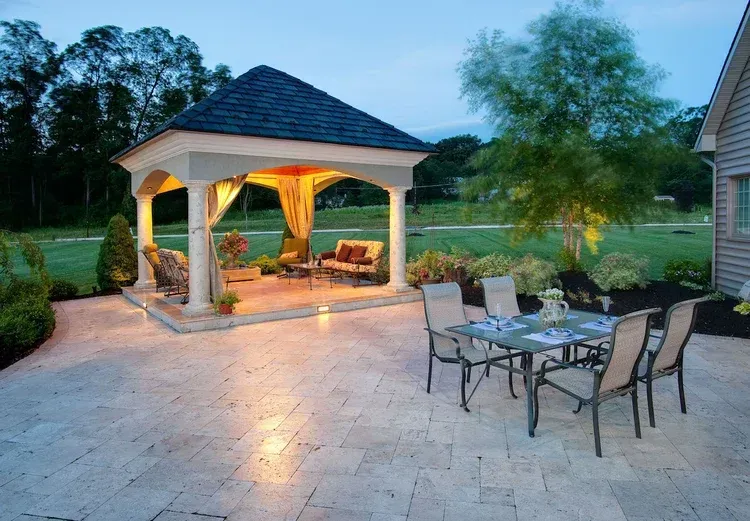
Because of medium-sized trees recovering more quickly, growth on the limbs and branches will begin years before that of a large tree. For this reason, you could end up having a medium and large tree becoming the same size in just five to seven years. The medium tree will catch up, cost less, and have a better chance of surviving.
How Much Does it Cost to Plant Trees?
Trees, in general, are an investment that add a lot of value to your property. Factors that affect the overall cost to install a tree include its size, species, and the accessibility of its location. We typically install multiple trees on a property and as part of an overall landscape project. The cost to add a single tree and its installation labor to an existing project starts around $500 and goes up from there.
It’s also important to understand that the cost per tree drops off significantly when multiple trees are planted as the necessary equipment and crews are already on site. Suppliers also often charge the same delivery costs for one or several trees, so it really pays to have at least several trees planted at a time.
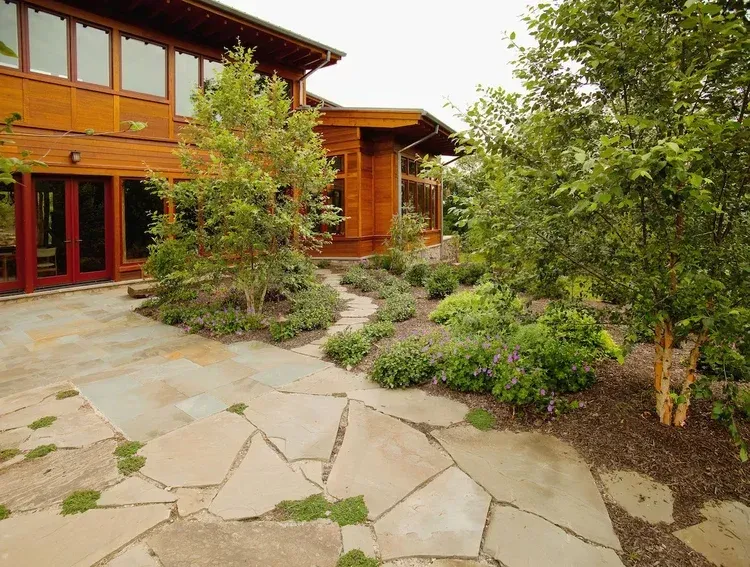
On average, a ballpark range of what it costs to install a 12 to a 15-foot tree, would be $1200 to $1,900, depending on the tree species. That is per tree, and typically just one part of an overall landscape design that already bears the cost of having a crew travel to your site and set-up. If it’s an especially complicated job, that price could be even higher. If you’re interested in large tree planting costs, you can assume a spaded tree, 20- to 25-feet in height, could easily cost double the amount of a medium tree if not triple the cost.
Purchasing multiple mid-sized trees will often serve the same purpose or ultimate goal as a large tree, and often at less cost. The installation won’t require a large tree spade or the excessive amount of labor or damage to the site.
Tree Planting in Lancaster or Reading, PA
If you’re looking for tree planting in Lancaster or Reading, PA, or its surrounding areas, then you may want to work with a Registered Landscape Architect (RLA) who can help you find the right trees that will be smart choices for each area of your property. It could end up that a large tree is what you want but it might also turn out that some medium-sized trees would work just as well.
An RLA will also know whether large tree planting is even possible for your particular property and landscape design. If large trees do wind up being your best optio, we can handle the coordination of their installation along with your other project items.
Large, medium, or even small, trees can be a wonderful addition to your property. But choosing the right size and species for your project is important. We want to make sure that you end up with a finished landscape that you love. That’s why we’ll help you choose the very best trees for your needs.
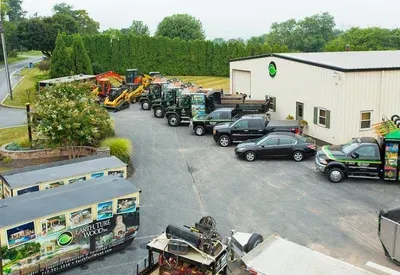
If you’d like to find out more about planting trees at your Lancaster or Reading, PA home, contact us for a free consultation or give us a call at (717) 721-3530 so that we can answer any of your questions.

Written by
Mary Dresser, RLA ALSA
Mary Hatch Dresser is a Registered Landscape Architect with a Bachelor’s degree in Landscape Architecture from the University of Georgia School of Environmental Design. Mary has designed landscapes for 32 years and joined ETW exclusively in 2009. Mary is a member of the American Society of Landscape Architects (ASLA); and also serves on the Shade Tree Committee in Strasburg Borough where she resides. Mary prides herself in carefully listening to her clients to professionally meld their ideas and personal criteria with sound, experienced design practice.


